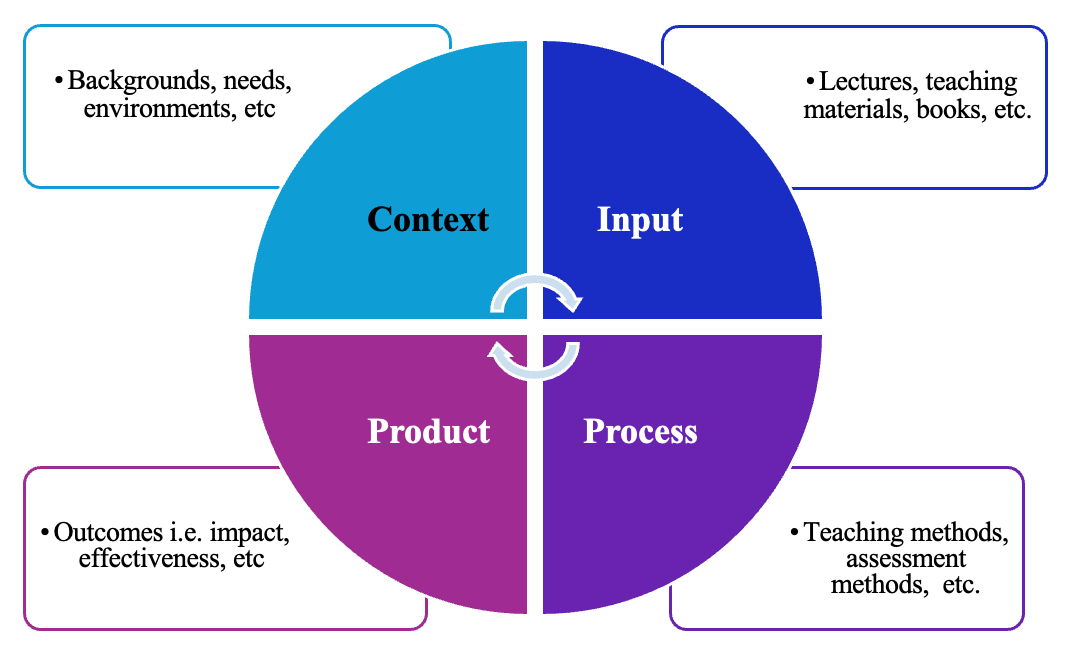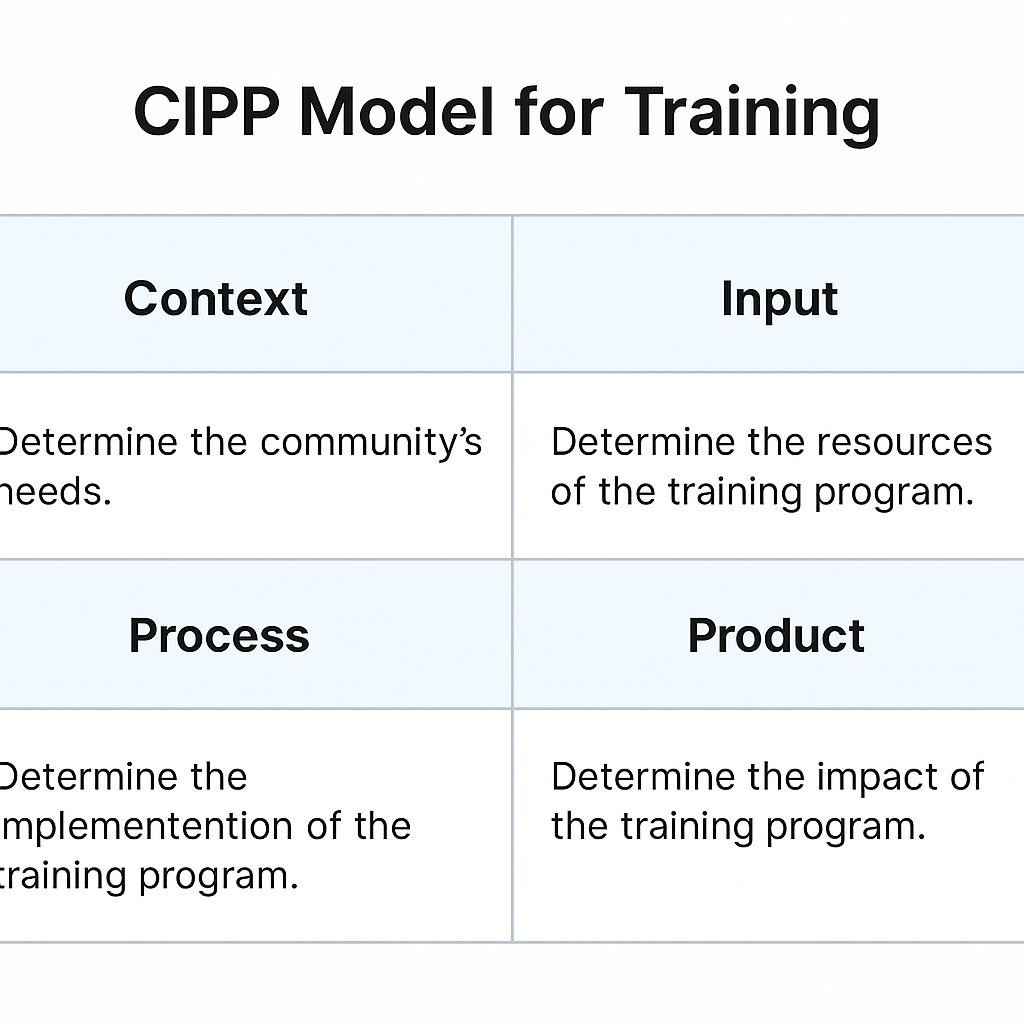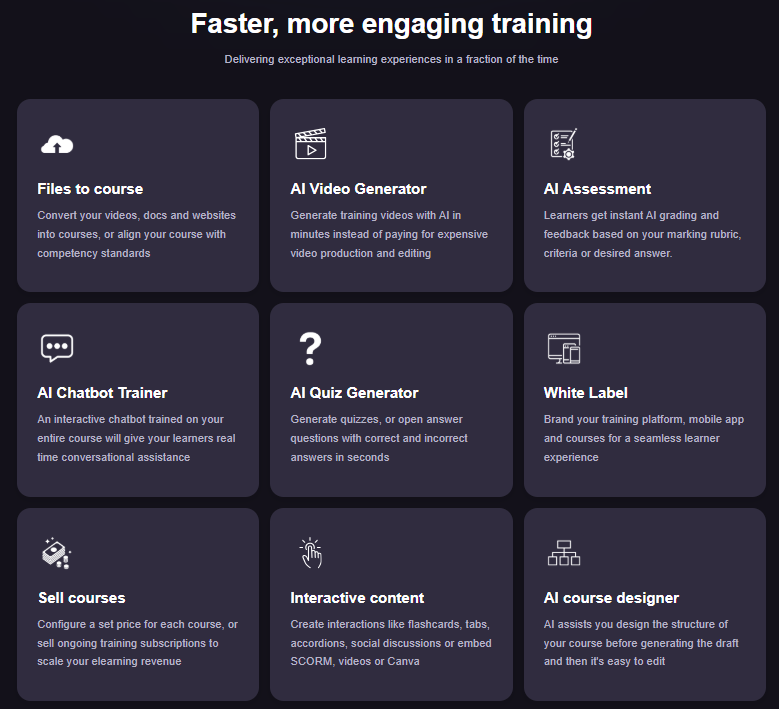How To Evaluate Training Programs with the CIPP Model
The CIPP model evaluates how well your training programs are resonating with your learners. Read now to learn how to use it to assess your training programs.
The CIPP model evaluates how well your training programs are resonating with your learners. Read now to learn how to use it to assess your training programs.

You developed a training program and successfully enrolled your workforce in it. They have been receiving training for a few weeks, but you don’t see positive changes in everyone’s skills or work behavior. Why is that so? How do you know whether your training program is effective?
Evaluating training programs ensures they fulfill learning objectives and support your organization's goals. Without proper evaluation, it’s difficult to determine whether a course is successful or requires improvement. This is where the CIPP model comes into play.
The CIPP model is a comprehensive framework designed to assess training programs at every stage: from planning through delivery to outcomes. It performs an evaluation in four stages, providing the reviewer or trainer with a detailed overview of their efforts.
With the CIPP model, you can make more informed decisions and ultimately create more effective training programs. In this post, we will guide you step by step through how to use each part of the CIPP model for effective training evaluation.
The CIPP model is an acronym for Context, Input, Process, and Product. Developed by Dr. Daniel L. Stufflebeam, this model supports continuous decision-making and improvement throughout a program’s lifecycle.
Unlike approaches that focus solely on end results, the CIPP model offers a holistic view by evaluating the environment, resources, the training process, and the final outcomes. This makes it especially useful for complex or ongoing training programs, helping evaluators and decision makers identify specific areas that need attention at any point in time.

The first step in the CIPP model is context evaluation, which revolves around “What is the setting and need for this training?” Here, you identify the problems, opportunities, or needs the training is meant to address.
It asks questions, such as:
This phase ensures that the training program is relevant and aligns with actual needs, rather than relying on assumptions. It also provides a solid foundation for setting realistic goals and expectations.
The input evaluation then examines the resources and plans employed to address the identified needs. This includes assessing the curriculum design, materials, training methods, staff qualifications, equipment, budget, and time allocated.
Essentially, you are asking: Are the right resources and strategies in place to deliver effective training?
For example, input evaluation may reveal whether the course content addresses all necessary competencies or if trainers possess sufficient expertise. It also considers whether the budget and technology support the planned delivery of training. Moreover, it ensures the program is feasible and well-prepared before it begins.
Process evaluation focuses on how the training is being delivered and whether it is being implemented as planned. This phase tracks details like instructor performance, learner engagement, attendance, pacing, and logistics.
It asks questions like:
Process evaluation involves ongoing monitoring through observations, feedback forms, or session evaluations to detect issues early and make timely adjustments.
The final evaluation element is Product, which measures the results and impact of the training. This includes both immediate outcomes and long-term effects.
This stage seeks answers to questions like:
Product evaluation looks at multiple levels, including participant reactions, learning assessments, behavioral changes, and organizational impact.
Here is how you can apply each component of the CIPP model to properly evaluate a training program:


Before diving into data collection or analysis, the very first step is to clarify the primary purpose of your evaluation. Ask yourself: What decisions do you want this evaluation to inform? For example, do you want to know if the training aligns with organizational needs, is delivered effectively, or has measurable impacts on performance?
Defining clear evaluation goals guides the entire process and helps determine what data to collect and analyze. At this stage, also set specific evaluation criteria and indicators for each CIPP component. These will be the standards or benchmarks that you will use to judge success.
For instance, a criterion for context might be “training addresses real skill gaps,” while for product it could be “participants demonstrate improved job performance.”
Context evaluation investigates the environment in which the training program operates. This step involves assessing the needs, opportunities, and problems that justify the existence of the training.
You can use techniques such as needs assessments, surveys, or interviews with stakeholders, as well as reviewing organizational goals. The goal is to confirm the relevance of the training and its objectives.
For example, if a company wants to improve its client communication skills, context evaluation would identify specific communication issues and target the relevant learner groups. This ensures that your training is purposeful and aligned with actual requirements rather than assumptions.
Input evaluation examines the training program’s design, planned resources, and strategies. This is where you assess whether the curriculum, materials, trainers, budget, and facilities are adequate and appropriate to meet the objectives identified during context evaluation.
Input evaluation typically involves reviewing documents, interviewing program designers, and analyzing resource allocation. For example, this step might verify whether the curriculum encompasses all critical communication techniques and whether trainers are adequately qualified to teach them.
Identifying gaps at this stage allows modifications before the training begins, preventing costly problems later.
Process evaluation centers on the actual implementation of the training program and whether it is being delivered as planned. This step involves collecting data throughout the training via observations, session evaluations, attendance logs, and participant feedback. This helps understand how the program is unfolding.
Are trainers engaging learners effectively? Are sessions following the planned schedule? Is learner participation high? The data collected here helps identify challenges or deviations in real-time, allowing prompt corrective actions.
For instance, if participants report confusion about the material or low engagement, you can adjust the methods or pace immediately, thereby improving the learning experience.
The product evaluation assesses both the immediate and long-term outcomes of the training to determine its effectiveness. This includes measuring participant reactions, knowledge and skill gains, behavioral changes on the job, and organizational impacts such as improved performance or productivity.
Product evaluation often uses tests, interviews, performance metrics, and follow-up surveys. For example, you might test participants on communication techniques after training and later assess their application in client interactions or sales results. This comprehensive evaluation ensures that you capture the true value of training, from learner satisfaction to business benefits.

The CIPP model also emphasizes analyzing the relationships among context, input, process, and product data. For example, context-based findings on learner needs should align with input (curriculum relevance), which affects the process (training delivery), and ultimately the product (outcomes).
Inconsistencies between these can reveal important areas for improvement. This helps decision-makers understand how changes in one area impact others.
Evaluation is only valuable if it leads to informed decisions. Based on your analysis, identify areas for improvement, whether it’s refining training objectives, updating materials, enhancing trainer skills, or adjusting delivery methods.
Now, use evaluation results to make evidence-based decisions. You can choose to continue successful programs, modify areas that need improvement, or even discontinue ineffective training.
Ensure that you adopt evaluation as a continuous cycle. It’s not a one-time event but a tool for ongoing development and quality assurance.
The CIPP model stands out for its proactive, continuous improvement approach, and digital tools support this method. Platforms like Coursebox use AI to automate data collection, grading, and feedback, providing real-time insights without adding administrative burden. Moreover, it offers features such as interactive quizzes, automated reporting, and AI chatbots, which enable instant learner support and accurate progress monitoring.

Leveraging such technology makes CIPP evaluation scalable, timely, and more precise. This empowers training teams to focus on quality improvement rather than manual data handling. With Coursebox, you can make your CIPP evaluation more effective, ultimately helping you develop more meaningful and sustainable training programs.
Sign up for free now to get started!
The CIPP model provides a comprehensive framework for evaluating training programs at every stage: Context, Input, Process, and Product. This end-to-end approach helps identify strengths and weaknesses early and continuously, rather than focusing solely on final outcomes. It enables organizations to make data-driven decisions that improve training effectiveness and alignment with their goals.
Unlike models that focus mainly on results or learner reactions, the CIPP model evaluates the training environment, resources, delivery, and outcomes throughout the program lifecycle. This continuous and holistic evaluation helps catch issues early and supports ongoing improvement.
Yes, the CIPP model is flexible and can be adapted to evaluate a variety of training formats, including in-person, virtual, and blended learning. It's effective for corporate training, educational courses, skill development programs, and more.
Common challenges with the CIPP model include gathering complete and unbiased data, getting stakeholder buy-in, and managing the evaluation workload. To overcome these challenges, it’s essential to communicate the purpose and benefits clearly, utilize simple yet effective data collection tools, and leverage technology where possible.
Yes, AI-powered training platforms like Coursebox can automate various aspects of evaluation, including grading, feedback, and learner engagement tracking. Its AI chatbots provide learners with real-time support, and its analytics dashboard gives trainers instant insights into the effectiveness of their training. This makes applying the CIPP model easier and more scalable by reducing manual work and enhancing data quality.
